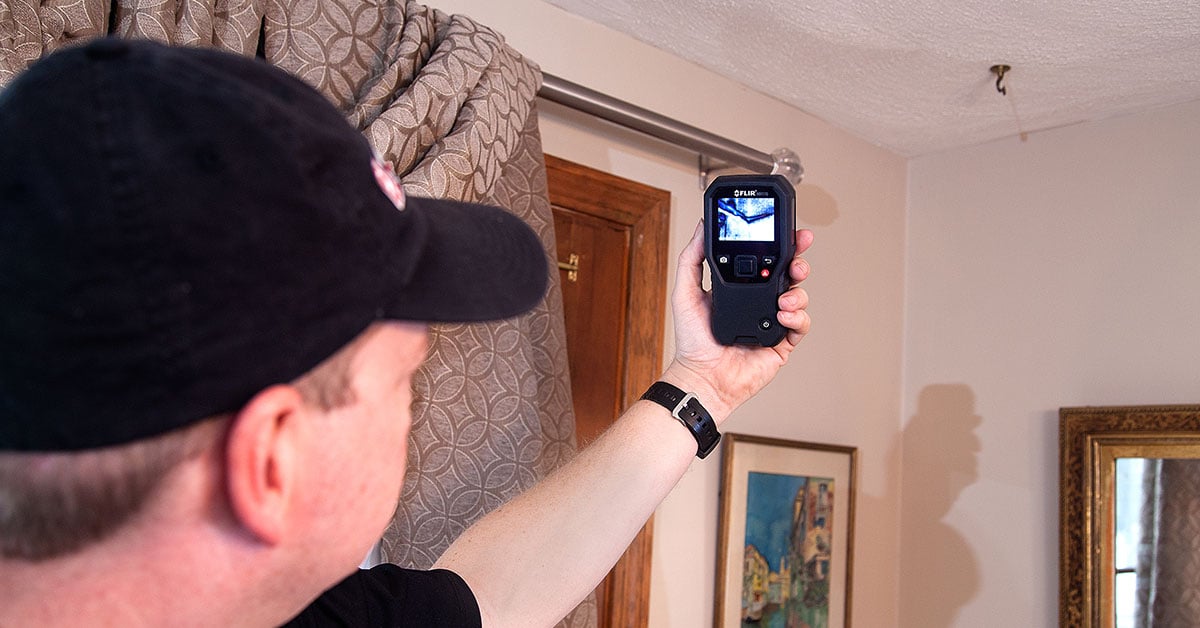Overview To Water Leak Detection At Home
Overview To Water Leak Detection At Home
Blog Article
The content following next in relation to Detecting hidden plumbing leaks is exceedingly engaging. Give it a go and draw your own personal ideas.

Early detection of dripping water lines can minimize a potential disaster. Some small water leaks may not be noticeable.
1. Take A Look At the Water Meter
Every residence has a water meter. Checking it is a surefire way that assists you find leakages. For beginners, shut off all the water resources. Make sure no person will certainly flush, utilize the tap, shower, run the washing maker or dishwasher. From there, most likely to the meter as well as watch if it will transform. Because no person is utilizing it, there should be no movements. If it moves, that indicates a fast-moving leak. If you identify no adjustments, wait a hr or two as well as check back again. This means you might have a slow-moving leakage that might even be underground.
2. Check Water Intake
Analyze your water expenses and track your water intake. As the one paying it, you need to observe if there are any disparities. If you detect sudden changes, in spite of your consumption coinciding, it indicates that you have leaks in your plumbing system. Bear in mind, your water expense should drop under the exact same array on a monthly basis. An unexpected spike in your bill suggests a fast-moving leak.
A consistent boost every month, even with the same behaviors, shows you have a slow-moving leakage that's likewise gradually escalating. Call a plumber to extensively examine your residential property, especially if you feel a warm location on your floor with piping below.
3. Do a Food Coloring Test
When it comes to water consumption, 30% comes from bathrooms. If the color somehow infiltrates your bowl throughout that time without flushing, there's a leakage in between the storage tank and also dish.
4. Asses Outside Lines
Do not forget to check your outdoor water lines too. Test spigots by connecting a garden hose pipe. Must water permeate out of the link, you have a loosened rubber gasket. Change this and also make certain all links are limited. If you have actually obtained an automatic sprinkler, it will certainly aid get it professionally examined and maintained annually. One little leakage can lose tons of water and increase your water costs.
5. Check and Analyze the Scenario
House owners ought to make it a habit to examine under the sink counters as well as even inside closets for any bad odor or mold and mildew growth. These two warnings indicate a leakage so timely focus is needed. Doing routine examinations, even bi-annually, can conserve you from a major trouble.
Inspect for stainings and also weakening as a lot of pipelines and also appliances have a life expectations. If you suspect leaking water lines in your plumbing system, don't wait for it to intensify.
Early discovery of dripping water lines can minimize a potential disaster. Some tiny water leaks may not be visible. Inspecting it is a proven means that aids you uncover leakages. One little leakage can waste lots of water as well as surge your water expense.
If you presume dripping water lines in your plumbing system, don't wait for it to intensify.
WARNING SIGNS OF WATER LEAKAGE BEHIND THE WALL
PERSISTENT MUSTY ODORS
As water slowly drips from a leaky pipe inside the wall, flooring and sheetrock stay damp and develop an odor similar to wet cardboard. It generates a musty smell that can help you find hidden leaks.
MOLD IN UNUSUAL AREAS
Mold usually grows in wet areas like kitchens, baths and laundry rooms. If you spot the stuff on walls or baseboards in other rooms of the house, it’s a good indicator of undetected water leaks.
STAINS THAT GROW
When mold thrives around a leaky pipe, it sometimes takes hold on the inside surface of the affected wall. A growing stain on otherwise clean sheetrock is often your sign of a hidden plumbing problem.
PEELING OR BUBBLING WALLPAPER / PAINT
This clue is easy to miss in rooms that don’t get much use. When you see wallpaper separating along seams or paint bubbling or flaking off the wall, blame sheetrock that stays wet because of an undetected leak.
BUCKLED CEILINGS AND STAINED FLOORS
If ceilings or floors in bathrooms, kitchens or laundry areas develop structural problems, don’t rule out constant damp inside the walls. Wet sheetrock can affect adjacent framing, flooring and ceilings.
https://www.servicemasterbyzaba.com/blog/how-to-detect-water-leakage-in-walls/

Do you really like more info about Finding hidden leaks? Try leaving feedback further down. We will be delighted to see your insights about this blog. In hopes that you visit us again soon. Those who enjoyed reading our blog posting kindly remember to share it. We value reading our article about Finding hidden leaks.
Report this page